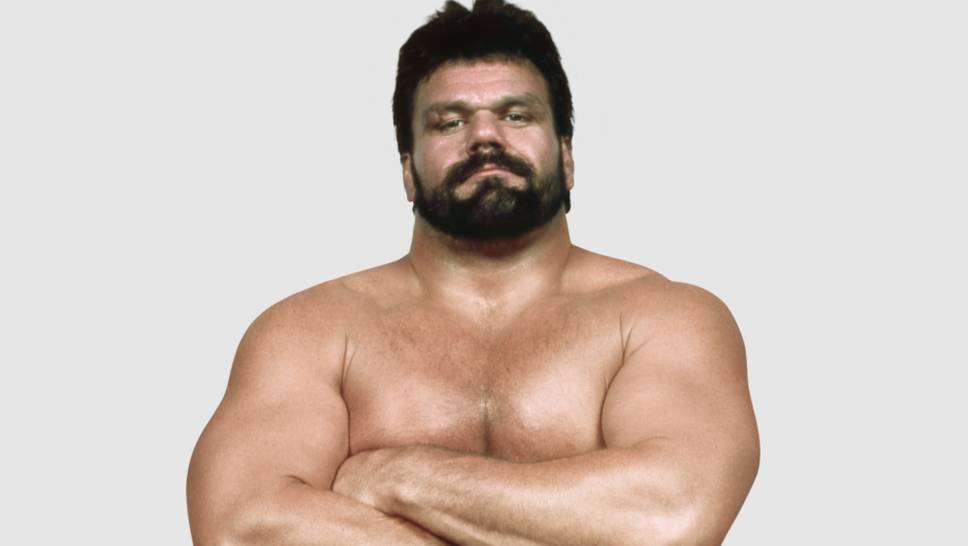Steve Williams was one of the most popular and most admired US wrestlers in Japan. Fifteen years ago today, he died under tragic circumstances.
They called him “Dr. Death” – even if the reason for it was more harmless than it sounded: It contributed to him becoming a fearsome myth.
With his incredible physical strength, former top wrestler Steve Williams was one of the biggest wrestling attractions of his time. The muscleman from Colorado was especially admired in the show-match mecca of Japan, where he was involved in numerous battles with other wrestling icons.
World market leader WWE had also once planned a larger role for Williams, but this was scrapped after a momentous mishap.
Today marks the 15th anniversary of the death of “Dr. Death” – much too early and under sad circumstances.
An outstanding college athlete
Williams, born on May 14, 1960, was an outstanding college athlete before his wrestling career. At the University of Oklahoma, he excelled both in football (he also played professionally in the short-lived NFL alternative USFL) and as a wrestler.
He was a four-time All American and reached the final of the NCAA tournament in his final year. He was only defeated by Bruce Baumgartner, who would go on to win two Olympic gold medals in Los Angeles in 1984 and Barcelona in 1992.
Williams’ nickname “Dr. Death” also dates back to his wrestling days: at junior high school, Williams occasionally competed with an ice hockey goalkeeper mask because of a broken nose – and aroused morbid associations in his coach and sister.
A primal force in the wrestling ring
Williams ultimately ended up in wrestling, and fellow University of Oklahoma legend Bill Watts took Williams under his wing with the plan of making him the star of his then nationally significant Mid-South league. As a teammate and more experienced teacher, he put Ted DiBiase at his side, before DiBiase’s Hall of Fame career as the “Million Dollar Man” at WWE.
The 130-kilo man Williams stood out visually and also impressed with his enormous physical strength: he managed over 225 kilos in a bench press and once left fans amazed when he lifted Ray Traylor (later the Big Boss Man at WWE and also deceased at an early age), who weighed almost 160 kilos, over his head and lifted him five times up and down.
Because Williams had weaknesses in terms of rhetoric and charisma, he ultimately did not reach the hoped-for superstar level in the USA – but he became all the more of a phenomenon in Asia.
A myth in Japan
The traditional NJPW league became aware of Williams in the late 1980s and booked him as a rival for the league founder and top star Antonio Inoki. The second major Japanese league, AJPW, hired Williams permanently – and Williams had his best time there.
Together with Terry “Bam Bam” Gordy (also deceased at a young age), Williams formed the “Miracle Violence Connection”, one of the most successful and most respected foreign tag teams in history. Williams and Gordy – who also competed for WWE’s rival WCW at one point – achieved a similar status as the brothers Terry and Dory Funk and the infamous roughneck duo Stan Hansen and Bruiser Brody.
Williams was also a popular attraction in Japan as a single wrestler, and his career even survived a scandal that would have ruined almost any other in Japan: Williams was caught with marijuana at an airport in 1995 – an absolute no-go in Japan. Because the powerful promoter Shohei “Giant” Baba used all his influence for Williams, Williams was allowed to return after a one-year entry ban.
Late engagement with WWE turned into a fiasco
In 1998, WWE (then WWF) signed Williams and planned a big feud for him with then-top star “Stone Cold” Steve Austin. Although Williams had passed his prime by then and was physically worn down from the intense style in Japan, the program would have been a late career highlight.
The idea was abandoned after WWE made a disastrous mistake with Williams: they allowed him to fight in a real fight at the “Brawl-For-All” tournament, which was held only once in the emerging MMA boom. Weakened by an injury, Williams suffered a knockout defeat at the hands of the little-known Bart Gunn, and his aura as a credible threat to Austin was gone.
Williams’ career never recovered from the Brawl for All fiasco. He still had a comfortable life because he had earned good money in Japan – until a cruel twist of fate struck him.
Fighting cancer also ruined Williams financially
In 2003, Williams was diagnosed with throat cancer. He initially survived the disease, but five years later, a follow-up examination revealed that the cancer had returned in an even more severe form.
Williams’ health deteriorated, and because of the American health insurance system, the cancer also ruined him financially: according to the Wrestling Observer, he had to spend $300,000 on his therapy and went broke. He worked in baggage handling at Denver Airport for as long as he could to keep his head above water.
In the last phase of his life, Williams lived with his son and retired mother. On December 29, 2009, he died, according to reports, in great pain. Emergency paramedics resuscitated him several times until Williams had no more vital energy.
Steve “Dr. Death” Williams, posthumously inducted into the “Legacy Wing” of the WWE Hall of Fame in 2020 without a ceremony, was only 49 years old.

